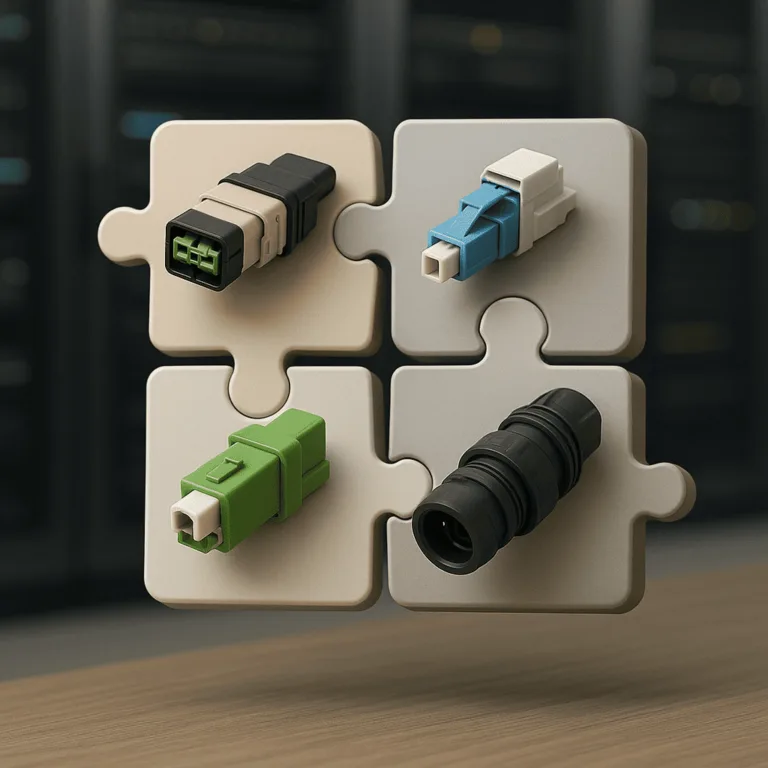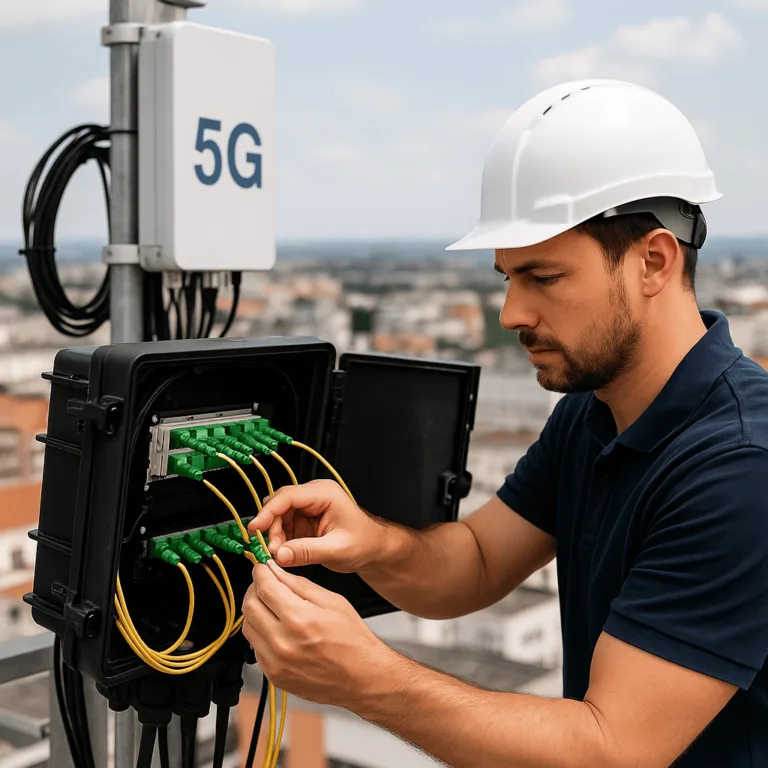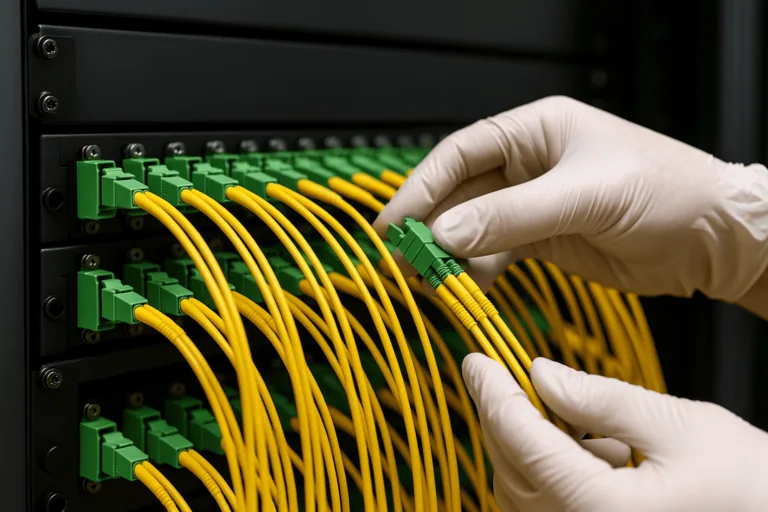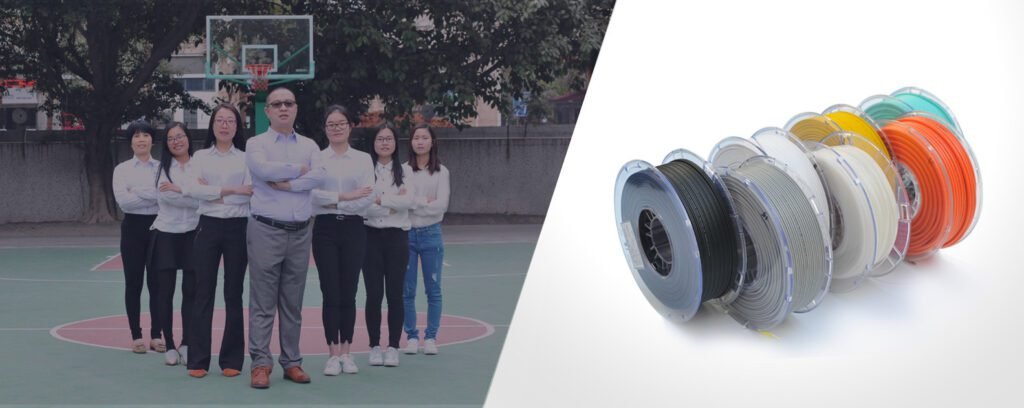How Can You Successfully Install and Maintain a Fiber Optic Cable System?

Installer for fiber optic cable
In an era where seamless communication is pivotal, the efficient installation and maintenance of fiber optic cables stand as a cornerstone for high-speed data transmission. However, navigating the complexities of fiber optic systems can be daunting. So, what steps ensure the longevity and optimal performance of these cables?
To successfully install and maintain a fiber optic cable system, follow a structured approach involving thorough planning, precise installation with minimal signal loss, regular testing, and careful maintenance practices. Adhering to these steps ensures optimal performance, safety, and longevity of the fiber optic network.
Fiber optic technology[^1] is transforming the telecommunications landscape by offering superior speed and reliability. Yet, installing and maintaining these systems require a meticulous process, from the initial planning[^2] stages to post-installation maintenance. Let's delve deeper into the essential steps for ensuring your fiber optic cable system performs optimally.
What are the Key Steps in Planning and Preparing for Fiber Optic Installation?
Planning is the foundation of a successful fiber optic installation. It involves selecting the right type of fiber optic cable[^3], assessing the installation site, and preparing the path for the cables.
Effective fiber optic installation begins with a thorough site survey to determine the optimal cable route, selection of appropriate cable type (single-mode or multimode[^4]), and minimizing splices to reduce signal loss.
During the planning phase, conducting a comprehensive site survey[^5] is crucial. This involves identifying the best route for the fiber optic cables by considering factors like distance, obstacles, and existing infrastructure. Choose the cable type based on the application and transmission distance, as single-mode and multimode cables serve different purposes.
Why is Gathering the Right Equipment and Materials Important?
Having the right tools and materials is essential for a successful fiber optic installation. It involves collecting cables, connectors, splicing tools, and safety gear.
Collecting appropriate tools and materials, including fiber optic cables, connectors, splicing tools, and safety gear, is essential to ensure a seamless installation process.
A well-executed installation requires a range of [equipment]. This includes fiber optic cables, connectors, and specialized tools like splicing and cable pulling equipment. Safety gear, such as gloves and protective eyewear, is also necessary to ensure safe handling of the delicate cables.
How Do You Prepare the Cable Path?
Preparing the cable path is a critical step in the installation process, involving clearing and preparing the route for the cables.
Preparing the cable path involves clearing the preferred route, which may include trenching or aerial construction[^7], depending on the installation method chosen.
Once the route is determined, clear and prepare it for installation. This may involve trenching or aerial construction. The chosen method will depend on the specific requirements and constraints of the installation site.
What are the Critical Steps in Installing Fiber Optic Cables?

The installation phase involves careful handling of fiber optic cables to prevent damage and ensure efficient data transmission.
To install fiber optic cables, carefully strip the outer jacket, pull the cables through the prepared path without excessive tension, and ensure proper splicing and connection[^8] to minimize signal loss.
During installation, remove the outer jacket of the fiber optic cables using a cable stripper, being cautious not to damage the fibers. Use cable pulling equipment to thread the cables through the prepared path, ensuring they are not subjected to excessive tension or bending. Proper splicing and connecting are crucial to maintaining signal integrity.
How Do You Splice and Connect Fibers Effectively?
Splicing and connecting fibers require precision to ensure proper alignment and secure connections.
Effective splicing involves cutting fibers to the correct length and using splicing equipment to join them. Connect fibers with precision using a fiber optic microscope[^9] for alignment.
Splicing the fibers correctly is critical for minimizing signal loss. Use a fiber optic cleaver and splicing equipment to cut the fibers to the appropriate length before joining them. Connect the fibers to their respective connectors using a fiber optic microscope to ensure precise alignment and a secure connection.
How Do You Test and Organize Fiber Optic Cables?
Testing and organizing the cables are essential for ensuring the system's performance and ease of maintenance.
Test connections using a fiber optic tester[^10] to ensure signal stability, and organize cables with ties and color coding for ease of maintenance and performance protection.
After installation, test the connections using a fiber optic tester to ensure the signal is strong and stable. Organize the cables using ties or other methods to protect them and facilitate maintenance. Implement thorough cable management, including color coding, to simplify future maintenance activities.
What are the Best Practices for Fiber Optic Cable Maintenance?
Regular maintenance is crucial for the longevity and performance of fiber optic systems.
Regular maintenance involves cleaning connectors, inspecting for damage, testing signal strength, and following safety precautions to ensure the fiber optic system's reliability and longevity.
Maintaining a fiber optic system involves several key activities. Regularly clean connectors and adapters to remove contaminants that could affect performance. Inspect for signs of damage or contamination, and test periodically to ensure functionality. Adhere to safety precautions, such as turning off power sources before maintenance, to prevent hazards.
How Important is Cleaning in Maintenance?
Cleaning is a fundamental aspect of maintaining fiber optic systems, ensuring clear and reliable connections.
Regular cleaning of connectors and adapters with appropriate tools prevents contamination, ensuring reliable fiber optic connections and system performance.
Routine cleaning helps avoid issues caused by dust, lint, or other particles that can disrupt signals. Use fiber optic cleaning wipes, isopropyl alcohol, and compressed air to maintain clean connections, thereby ensuring the system's reliability.
What Safety Precautions Should Be Taken During Maintenance?
Safety is paramount during the maintenance of fiber optic systems to prevent accidents and damage.
Follow safety precautions like turning off power sources and using protective equipment to prevent accidents and ensure safe maintenance of fiber optic systems.
Before maintenance, ensure all power and light sources are turned off to avoid laser hazards. Use appropriate personal protective equipment and follow manufacturer guidelines to maintain safety during the maintenance process.
Conclusion
In summary, the successful installation and maintenance of fiber optic cable systems require meticulous planning, careful installation, and regular maintenance. By adhering to these best practices—conducting thorough site surveys, using appropriate tools, ensuring proper splicing and testing, and maintaining cleanliness and safety—you can ensure the optimal performance and longevity of your fiber optic network. These steps are crucial for telecom engineers and product managers striving to maintain high-speed, reliable communication networks.
[1]:Provides a broad understanding of how fiber optics are revolutionizing telecommunication networks.
[2]:Offers detailed insights into the initial steps required for effective fiber optic installation.
[3]:Clarifies the different types of fiber optic cables and their applications.
[4]:Explains the differences between single-mode and multimode cables, helping in selecting the right type.
[5]:Guides the process of conducting site surveys to optimize fiber optic paths.
[6]:Lists the equipment necessary for fiber optic installation, crucial for procurement planning.
[7]:Compares different methods for cable path preparation, aiding in method selection.
[8]:Provides techniques for effective splicing, crucial for minimizing signal loss.
[9]:Helps in selecting tools for precise fiber connection alignment, essential for performance.
[10]:Offers information on testing devices to ensure network stability and performance.







